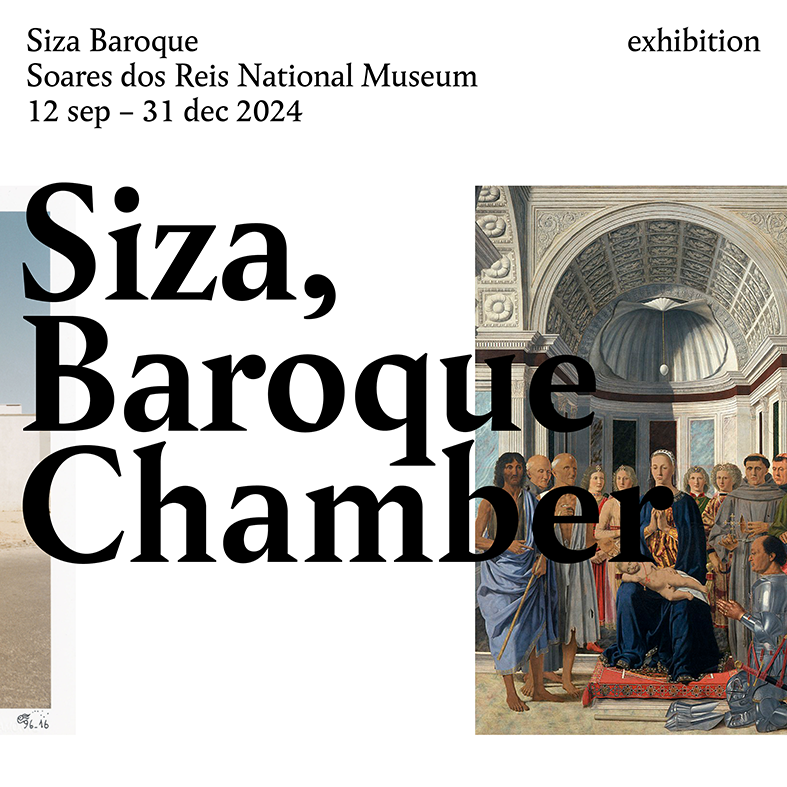The result of the Siza Baroque Research Project (which in 2021 was ranked 1st in the competition launched by the Foundation for Science and Technology for IC&DT projects in the field of Álvaro Siza’s architecture), the exhibition concludes a cycle of studies developed over the last three years at CEAU, FAUP’s Research Unit.
The motto launched based on a protocol established between the Ministry of Science, Technology and Higher Education (MCTES), the Ministry of Culture, and the Serralves Foundation, made possible to carry out this integrated and multidisciplinary research programme on Álvaro Siza’s work, namely by exploring the archives kept at the Serralves Foundation, the Calouste Gulbenkian Foundation and the Canadian Centre for Architecture, which agreed to use them.
José Miguel Rodrigues (Principal Investigator and current Director of the Research Centre) and Joana Couceiro (Integrated Researcher and co-responsible for the project), both curators of the exhibition, with Constança Pupo Cardoso (Designer and assistant curator of the exhibition), have brought together a relevant group of researchers, grant holders, consultants, etc., from various schools and disciplines, who gravitate around the study of Siza’s work, starting in particular from this baroque lens, assumed by Siza at different moments in his path.
Ana Tostões, Jorge Figueira, Juan José Lahuerta, Maria Filomena Molder, et al. are some of the names that make up the team that can be consulted in complete on this website, one of the platforms developed throughout the research and which the researchers intend to continue to foster in the future.
The exhibition proposed, on the other hand, is limited in time (12 September to 31 December), and its temporary nature is essential for understanding one of the dimensions that characterises the Baroque idea. The recognition of the nuances of human life in artistic expression and in the architectural construction of a collective territory (where there is a place for repetition, anonymity, and the ordinary day-to-day, but also for exceptional, unique, and unrepeatable) characterises the Baroque city that Siza pursued and which this exhibition displays outside the academic sphere.
“The Soares dos Reis National Museum provides the visitor with a framework, taking him through the museum’s collections before entering the chamber of Baroque echoes, which, as well as revealing some of the intricacies of the research to a diverse public, offers a retroactive interpretation of Siza’s work based on chosen focuses,” refer the curators.
The program parallel to the exhibition, another proposal of the project, has been running since April with talks by Eduardo Souto de Moura, Angél Garcia-Posada, Juan José Lahuerta, and Maria Filomena Molder, but another series of talks and a colloquium with all the researchers are still scheduled. This cultural dimension of the project was valued by the competition jury, which, in its assessment, emphasised how it was fundamental to the originality and quality of the proposal:
“Considering all the projects, this is the only one that addresses research questions related to a broader field of ‘cultural studies,’ with links to philosophy and the arts, not just architecture. They propose an original approach to the comparative analysis of specific works by Siza at different scales and in different urban contexts. The project’s originality is also present in the idea of producing installations and exhibitions, escaping the ‘traditional’ dissemination of scientific research.”
This research sought to bring together Álvaro Siza’s archives, publications, and work itself, which are currently dispersed across various institutions and geographies, in a single cataloging system that allows this information to live together naturally, albeit virtually. The example followed was the cataloguing of the work of a Baroque author – Bach, and his compositions organised in BWV.
The curatorial selection is already based on this proposal, spreading the idea among peers about an inventory hypothesis that the researchers would like to see implemented, namely among the main institutions that hosted Siza’s collection and that supported the competition launched by the FCT.
The programme ends at 9 pm on 14 December with a concert at the Clérigos church, where the vocal group Olisipo will perform Magnificat em Talha Dourada (Magnificat in gilded wood), a composition by Eurico Carrapatoso, a contemporary of ours (like Siza), who (like Siza about architecture) assumes that he values tradition more than originality, as he is, in his own words, “more concerned with writing music than writing history.”
A composer of our time who works from the music of the past, as if the limits imposed by historical chronology lose their rigidity. Carrapatoso, as Siza, sees originality and chronology as fragile values. This position about the craft, shared by both authors, extends to the masters and their work.
“The Magnificat is a tonal work in G Major, which is the tonality I feel in the gilded carvings (…) It’s a tribute to the Baroque (…). Naturally, the spirit of Bach echoes, hovering over the work.”
Echoes that extend to architecture and Siza, perhaps right when he says, “We all have a Baroque component in our minds which doesn´t go away as others do.”
In the last quarter of 2024 (at Soares dos Reis Museum and clérigos Church), it will be possible to question commonplaces associated with the Baroque, particularly the chronological, and (this is the belief of the researchers) understand how they are just starting points for a much broader worldview that (at least in Siza) doesn’t disappear.

